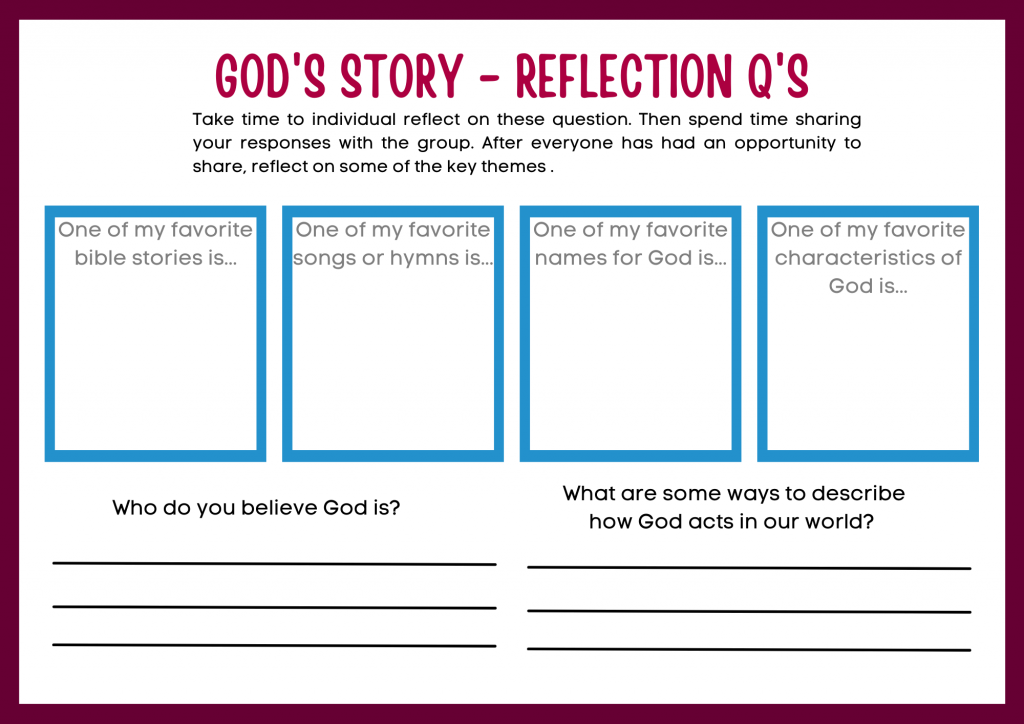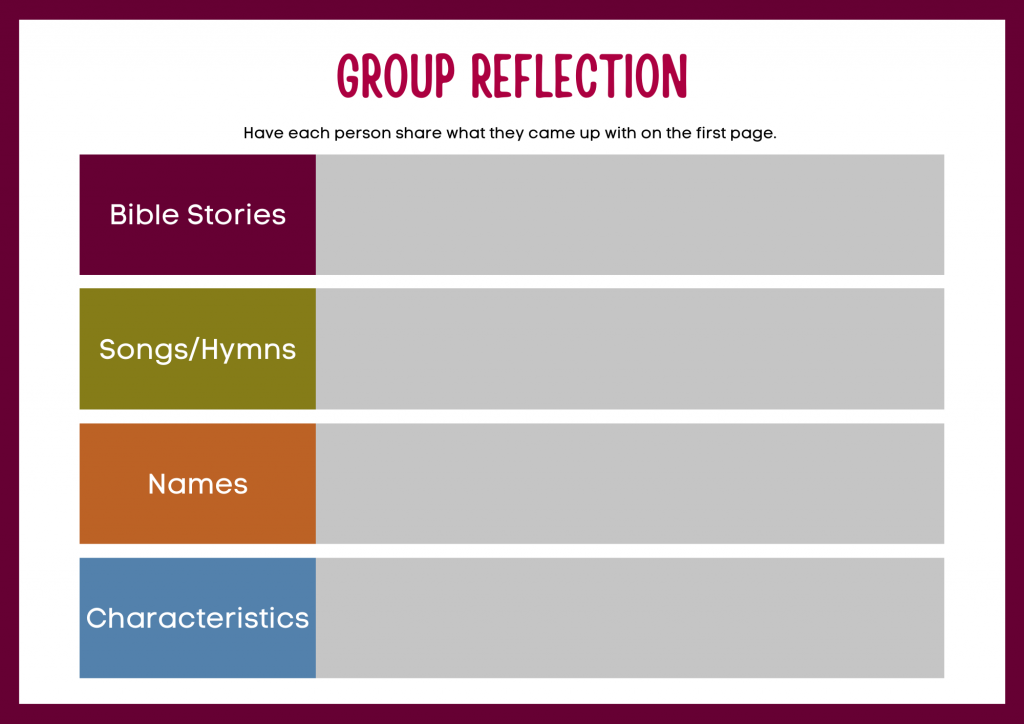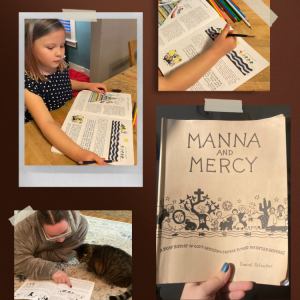 In the second artform of the Public Church Framework, Interpretation, we move into listening to God’s story and we spend time articulating our faith community’s core biblical and theological commitments. We reflect on how our theological commitments shape the way we hear our neighbor’s story, and how our neighbor’s story shapes our theological commitments.
In the second artform of the Public Church Framework, Interpretation, we move into listening to God’s story and we spend time articulating our faith community’s core biblical and theological commitments. We reflect on how our theological commitments shape the way we hear our neighbor’s story, and how our neighbor’s story shapes our theological commitments.
How do we do it?
We’ve categorized interpretation into four different layers:
- Identify the most important things we heard in accompaniment.
- Identify our most important theological themes.
- Connect what we heard in accompaniment with theological themes that are similar.
- Ask ourselves how these theological themes help us understand what we heard in accompaniment and vice versa.
This blog post will focus on steps one and two, identifying the key themes from accompaniment and identifying the theological themes of our faith community.
1. Identify the most important things we heard in accompaniment.
- First, spend time as a team sharing about your experiences practicing accompaniment.
- Who is our neighbor?
- Who did you talk to? What did you hear?
- How are our neighbors experiencing hope & joy?
- How are our neighbors experiencing anxiety, fear and heartache?
- What are our neighbors’ hopes, dreams and desires for our shared neighborhood?
- Who cares about the things and people our faith community cares about?
- Second, what key themes are emerging as your team is sharing?
Additionally, it’s also possible that you are curious to hear from others in the neighborhood. We will continue to practice Accompaniment even as we’re adding in the next layer of the Public Church Framework, interpretation. Take note of any other people or places you want to hear from, and whose voices may be missing from the story.
2. Identify our most important theological themes.
There are two main questions we ask to help us begin to identify some of the theological themes that are most important to us.
What are some key components of the biblical narrative that shape our understanding of “God’s Story?”
What are our faith community’s core theological commitments?
For a variety of reasons, it may seem difficult to parse out your faith community’s theological themes or reflect on the biblical narrative. You may not want to make claims about what other people believe. You may feel like you don’t know the right words to talk about God. Your beliefs about who God is may be continuing to develop, deepen, change. For all of those reasons, and many more, this artform, Interpretation, may feel uncomfortable or scary.
Here are some additional sets of questions that break those two bigger questions down into smaller ones.
Additional Interpretation Reflection Questions
 What are some of your favorite bible stories?
What are some of your favorite bible stories? - What are some of your favorite hymns or songs?
- What are some of your favorite names or images for God?
- What do this stories, songs, and names say about who God is and what God does?
 How is the Biblical Narrative used (or not used) in our faith community? Why?
How is the Biblical Narrative used (or not used) in our faith community? Why?- What are some songs, art pieces, poems, or readings that this community thinks is important?
- What are the narratives that our faith community gathers around?
- What do they reveal about who this community is, or who this community wants to be?
- What are some of the shared values and commitments that this faith community holds?
- What do the ministries of our church reveal about what we believe is important to God?
- What does our churches budget reveal about what we believe is important to God?
You could use things like Mentimeter, Jamboard, Google Docs, or post-it notes to gather responses to these questions.
Manna and Mercy
 Another resource that we used to help us reflect on the biblical narrative was Manna and Mercy, by Daniel Erlander. This book a short summary of the narrative arc of the bible that highlights some important themes, like God is relational, God is a God of abundance, God cares about justice. While each person and faith community in the project may have a different relationship with the Bible. And there may be a variety of ways that they use it (or don’t use it) in their congregational life together, the Bible has been one of the primary sources in the Christian tradition and because of that it influences how people understand who God is and how God acts. It directly, or indirectly, shapes our “God Story.”
Another resource that we used to help us reflect on the biblical narrative was Manna and Mercy, by Daniel Erlander. This book a short summary of the narrative arc of the bible that highlights some important themes, like God is relational, God is a God of abundance, God cares about justice. While each person and faith community in the project may have a different relationship with the Bible. And there may be a variety of ways that they use it (or don’t use it) in their congregational life together, the Bible has been one of the primary sources in the Christian tradition and because of that it influences how people understand who God is and how God acts. It directly, or indirectly, shapes our “God Story.”
To learn more about this book, and other related resources, check out their website at www.mannaandmercy.org. This book and these questions are some ways to begin articulating who we believe God to be, and what we believe God does. There may be other ways to name these things as well! We’d love to hear from you if you’ve got other ways of naming your communities theological commitments.
What’s next?
After we’ve spent time reflection on the key themes of accompaniment, and we’ve begun to articulate our communities core theological beliefs, we begin to put those two in conversation with each other. First where do we see connections between them, and then second how do they help us understand each other.
